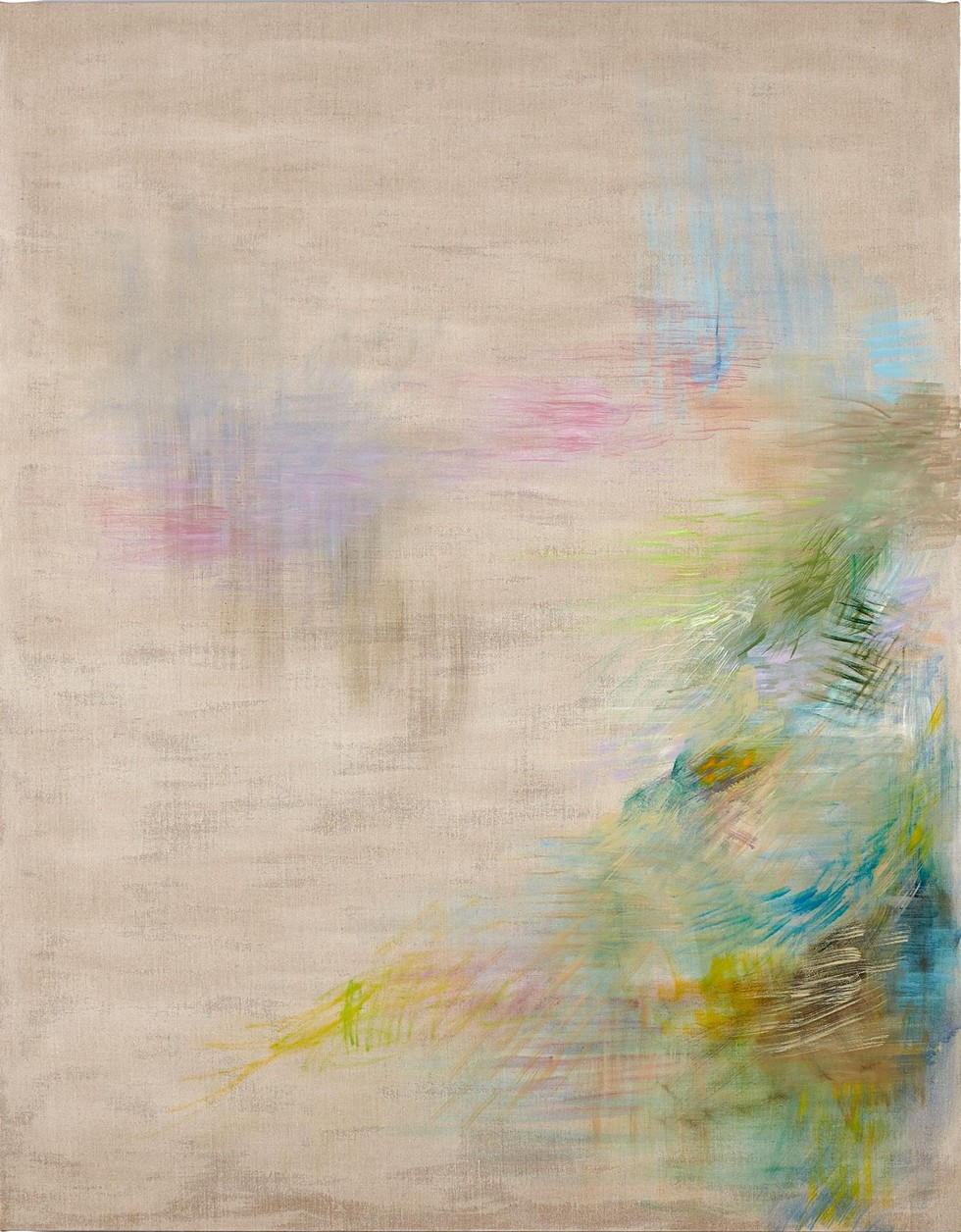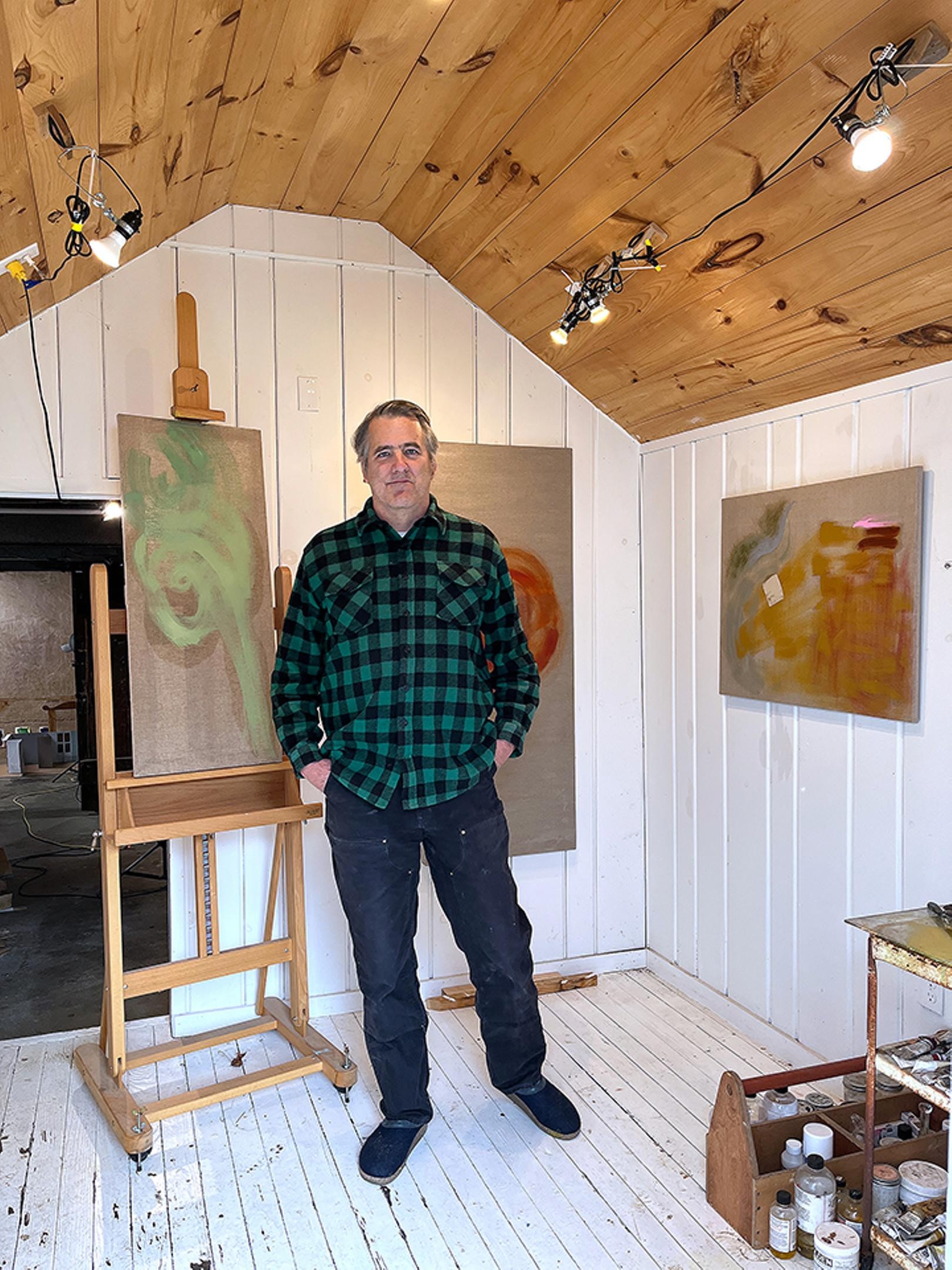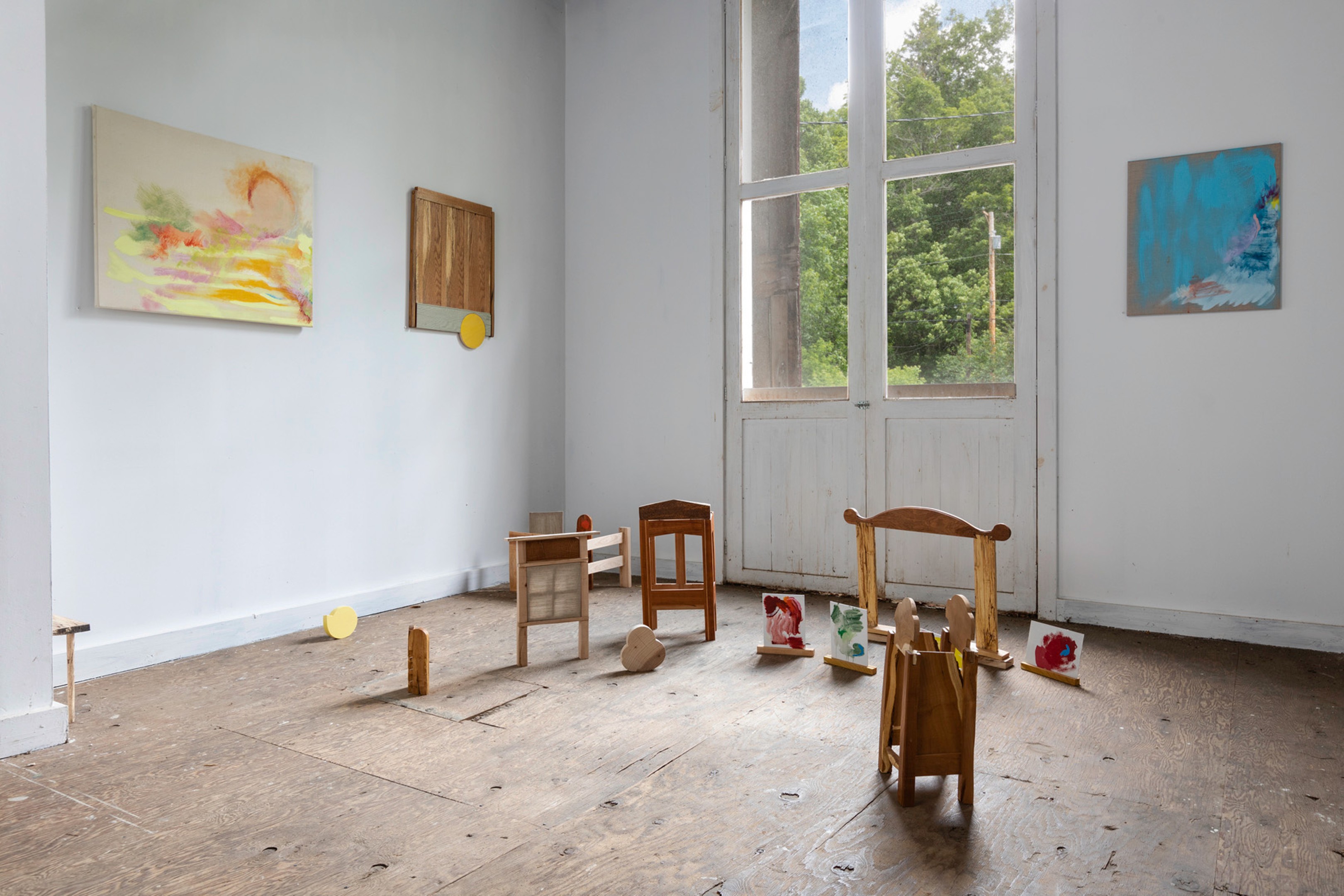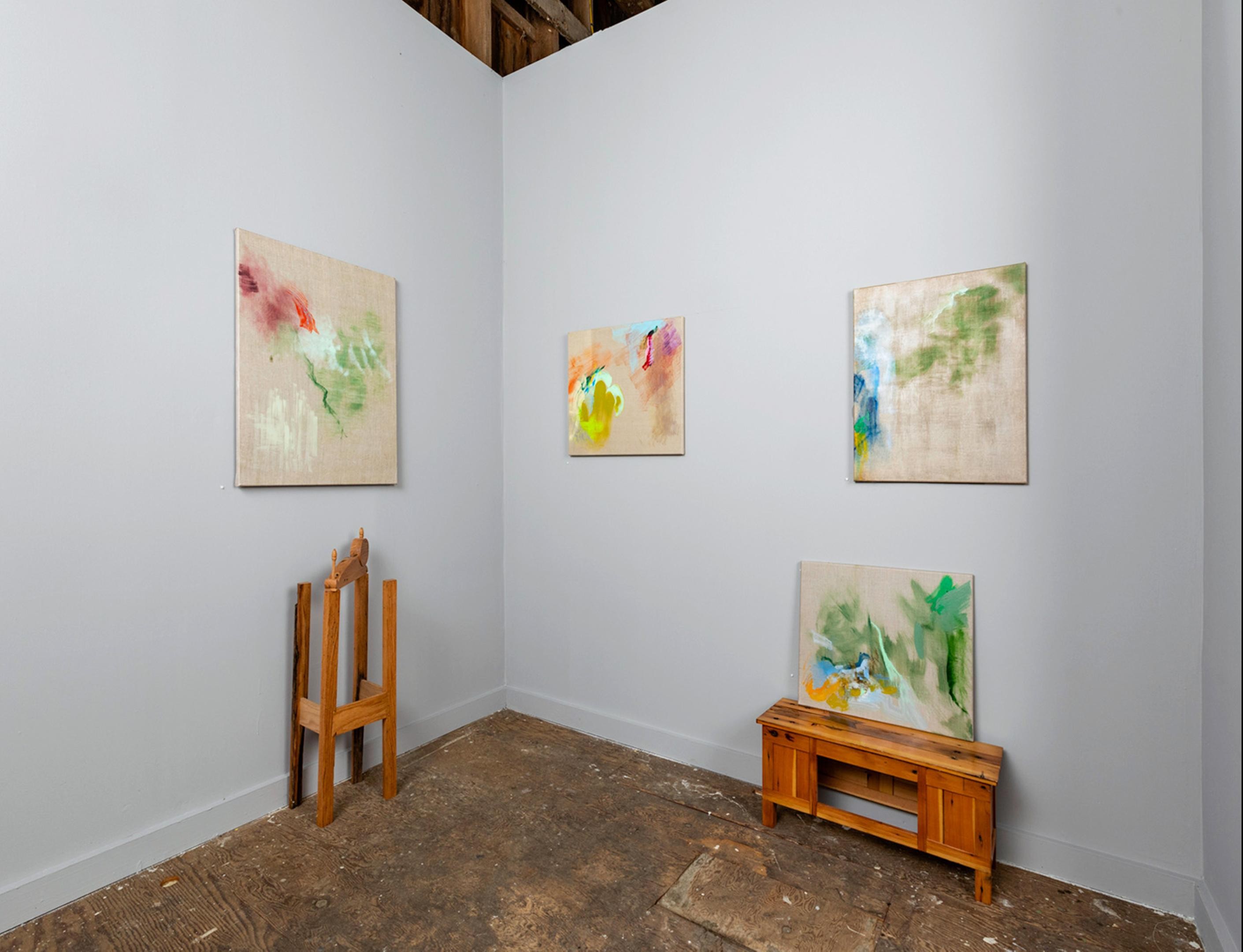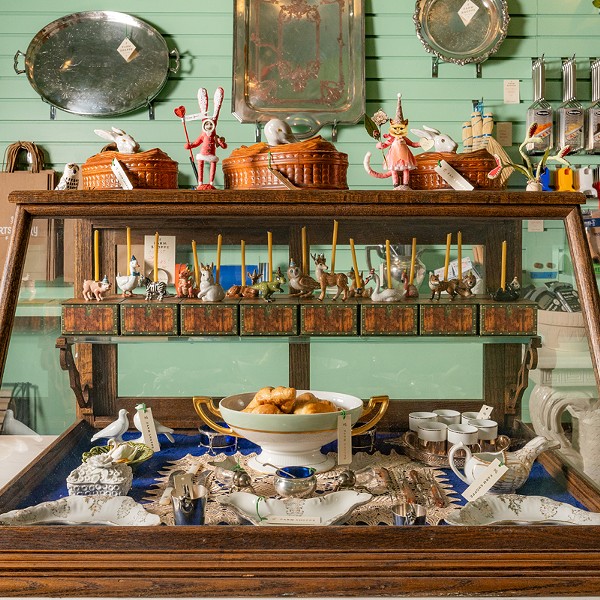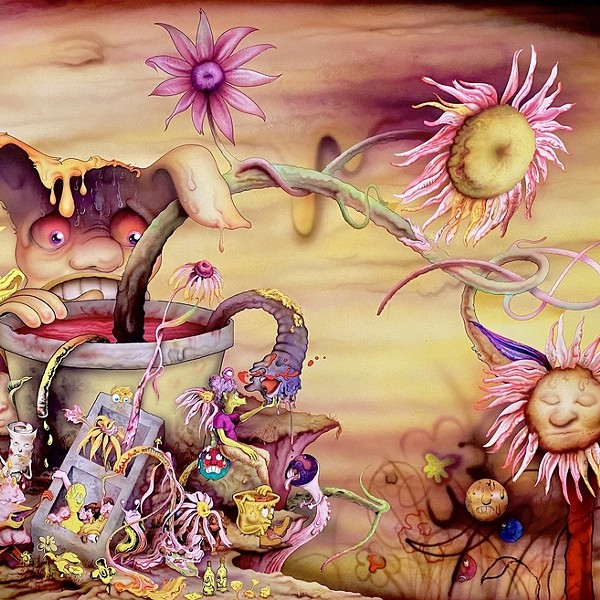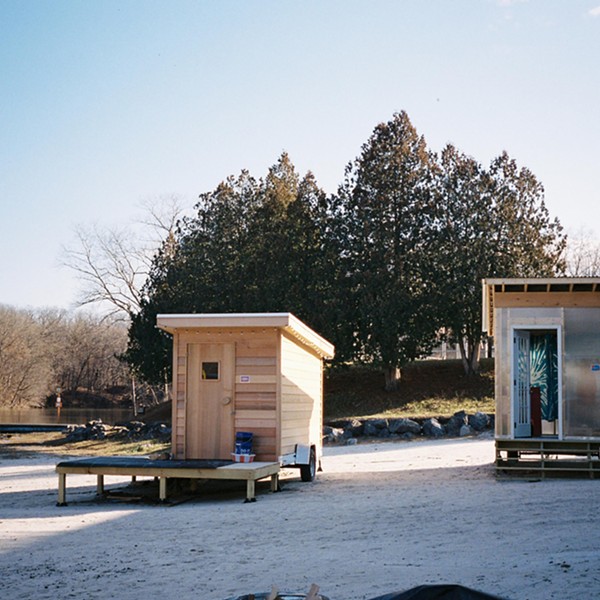Russell Steinert remembers standing in a French manor, pretending his father owned it: the vaulted ceiling, the box hedges, the gravel drive. He was 12 or so. His mother took him, while his father—French, yes, but with no aristocratic trappings—waited in the car. He and his father never spoke about it, or about anything, really.
"It was like a surrogate parent," Steinert says, speaking of his later love for the artistic traditions he found in Europe: medieval art, Dutch miniatures, devotional painting. You can see it in his early work, a personal vocabulary of traditions modernized by a young Berkeley artist. Imagine an installation like an altarpiece, with an elaborate frame of wrought iron surrounding a beautifully childlike style of figuration. Inside the framework, a boy picks splinters from his feet, while an older figure watches over. It looks halfway between quotidian intimacy and a biblical scene.
Steinert met early success with this style of work, or rather, a somewhat uninterrupted string of successes: from Brown, to Berkeley, to his first show at Gallery Paule Anglim in San Francisco, where all of the work sold. That was around 1986. He remembers that one of his teachers–Brian Wall, an apostate of New York style minimalism—visited the show, and commented on Steinert's upcoming move across the country.
"I hear you're moving to New York. Heard lots of interesting things about that place," Wall told him. "And I remember thinking," Steinert tells me, some thirty years later, "wait a second—this guy's messing with me."
And he was. Because when Steinert moved to New York, he found a lot of commercial art acolytes with varying degrees of irony poisoning. His own work was far outside of its context, and received little fanfare. Or none.
"Basically, I was a bug," he says, and kind of winces.
Then he didn't show work for 30 years.
"I try not to be judgmental," Steinert keeps repeating, which is funny, because he's not, and also because I keep trying to get him to be, just a little bit. It's clear that he passed through a dark night of the soul, or maybe like a decade of them, and that his understandable antagonism to Manhattan as he found it was far from purely defensive reaction. He speaks quite believably about the elements of commercialist obsession and his unwillingness to capitulate to them, or at least, his unwillingness to pivot in a way that felt like abandoning his own artistic precepts in favor of meaningless gallery flash. So I feel like he maybe gets to be a little shitty about whoever the 1980's version of current art world It Boy KAWS was.
Anyway, that's not really the point. The point is that Steinert got bent for a while. He went through a phase of making weird, maybe a little scary, kind of alienating paintings, and smashing a number of cellphones. He worked as an art handler, and a carpenter, and he made $15-an-hour, which makes me sad, because adjusted for inflation that's almost twice what I made for the same work last year. Wage stagnation's pretty bad folks, though that's not the point either. The point is that Russell met Janis.
"I had these friends [Denise Campono and Steve Morse] who kinda took me in, like some poor little rich kid who wound up in Brooklyn," he says with a laugh. As far as I can tell, Steinert says rich kid and means “went to college.” He's sheepish about his class background and whiteguyness, and takes the ethics surrounding his social privilege seriously, which is presumably part of why he wound up placeless. But it was also presumably a part of securing Morse and Campono's charity, who felt compelled to introduce him to a sculptor, a young woman with a pickup and power tools and maybe some necessary perspective. She was cool. She was Janis Stemmermann. And Steinert showed her his paintings. "You are so lost," she said.
I'm not really clear on the steps that led from lost boy diagnosis to 30-year marriage with two children. Something happened. Cellphones remained intact. Employment steadied. Stemmermann found successes and Steinert supported these. And in the meantime, he continued making, and not showing, work. Steinert speaks of Proust often, with admiration for the grand-scale attempt to know the world through the self. The incipient moment for his current projects seem to be a cradle he once made for his daughter, and seeing her in it, with her arms up, reaching.
"She was so happy," he says. "And I thought to myself: This is what you have to do."
This was the subject of life and work both. He began a long process of introspection, domestic focus, self-mapping. "These [works] are the essential oils of that process," he says of the abstractions in wood and canvas he's recently begun to show. I first encountered them at the Re Institute, an alternative gallery space in Millerton, and was admittedly unsure how to approach them. I should also mention that my appetite for abstract expressionism has, in general, been severely diminished. But Steinert began telling this story, a version of this same arc I've been describing to you here, and all of his meaning dropped into the room.
The works I saw were art of art, meanings superimposed on each other, at once a representation of all that might have been made, at once a representation of the project that took that work's place, that was the work as much as it wasn't.
The paintings and sculptures were arranged in two spaces—an adults' room and a children's room. There was non-furniture, like the wobbly stool in the corners of the children’s room that activated a space around woodcut blocks originally made for his daughters. In the adults' room, there was the armoire with crossed arms, self-entangled and useless, thus refuting its status as craft, but refuting too the arches of high art it could no longer be. Each canvas in the children's room was swollen in forms and tones and practically laughing, simple in their heat and direct intentions, and so opposite of the palettes and lines of the adults', the cool tones barely there and ringing at the edges, the strokes like Japanese brushes dipped, like threads of ink unraveled until they dissipate completely into the clarity of water.
It felt like work we don't often get to see: a degree of deeply felt domestic attention from the male perspective; this love, and the felt but not seen contortions necessary to create it, devote to it. I find it funny that in the same eras of whiteguy excesses that created the more-than-justified cultural reactions to them, there were these inversions played in a minor key, these attempts, occasionally ugly, at refusal and reconfiguration. I was so glad to meet them.
New work by Russell Steinert is part of the group show “The Thin Film of Living,” curated by Chris Freeman, at Private Public Gallery in Hudson, opening on December 9 and on display through January 13. Other artists in the show include Tad Wiley, Maciej Markowicz, Kylie Heidenheimer, Emily Feinstein, Deborah Darcy, and Karlos Carcamo.







